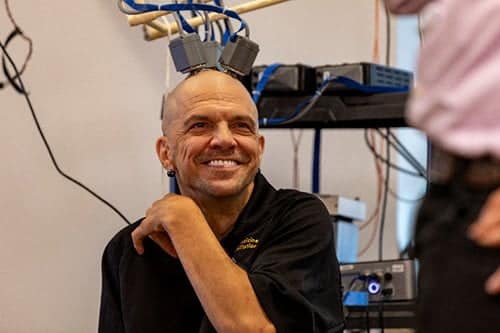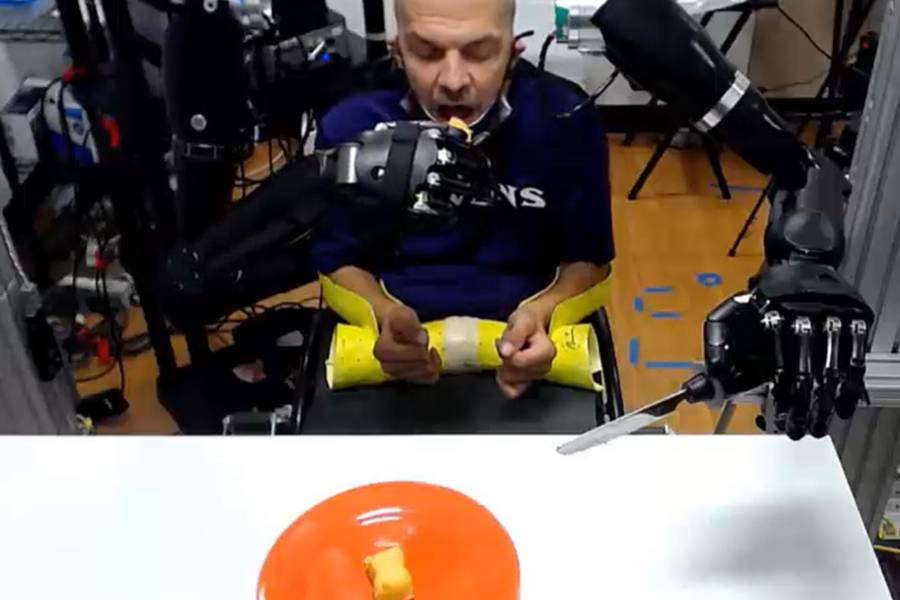A new system combining artificial intelligence, robotics and a brain-machine interface takes a step toward restoring function and autonomy for people without full use of their limbs.
For more than 30 years, after an accident in adolescence, Robert “Buz” Chmielewski has been quadriplegic: minimal movement and sensation in his hands and fingers. In November, however, he maneuvered two robotic limbs with his mind to enjoy a dessert.
An experimental plant
Almost two years ago, Buz underwent 10-hour brain surgery at Johns Hopkins Hospital in Baltimore as part of a clinical trial originally led by the Defense Advanced Research Projects Agency – DARPA and leveraging advanced limbs developed by the Johns Hopkins Applied Physics Laboratory (APL).

The objective of the experiment? Allow participants to control assistive devices and allow the perception of physical stimuli (by touching the limbs) using neurosignals from the brain.
Surgeons implanted six sets of electrodes into both sides of his brain, and within months he was able to simultaneously control two robotic limbs through a brain-machine interface.

Robotic Arts: The next steps (or should I say pasTi?) Of this experimentation
Francis Tenor, neuroscientist and principal investigator for the Smart Prosthetics study, says the next steps for this effort include several improvements. Not only the expansion of the number and types of daily living activities Buz can do with robotic limbs, but also additional sensory feedback so he doesn't have to rely on vision to know if he's succeeding in his actions.
Many people take it for granted. Being able to simply eat alone is an incredible achievement. A turning point.


